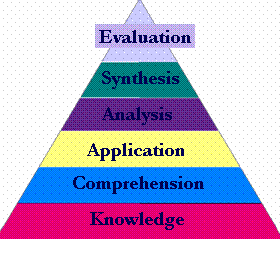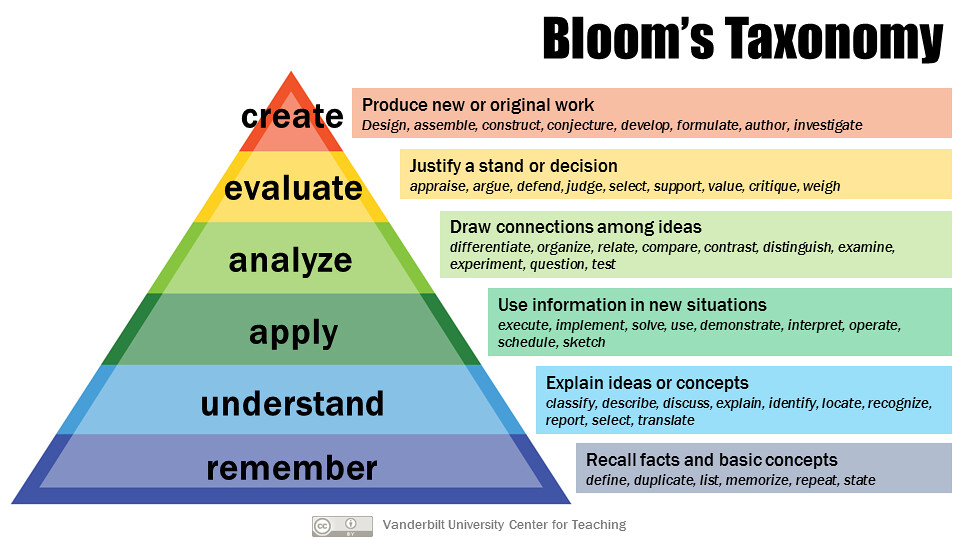In 1956, a research group led by educational psychologist Dr. Benjamin Bloom created a framework for classifying and describing learning objectives and outcomes. This taxonomy essentially mapped out the goals of the learning process, and has been elicited extensively by professional educators in the decades since its release.
The original Bloom’s Taxonomy (it has been revised in recent years) identified a hierarchy of competencies that learners are expected to progress through to achieve mastery of a skill or concept. Each progressive step in the process was imagined to be more demanding than the previous, and that mastery of the early stages was necessary before further progress could be achieved.
The original 6 cognitive categories of Bloom’s Taxonomy were:

- Knowledge: can the learner remember and recall the lesson material?
- Comprehension: can the learner restate, summarize or discuss the lesson material?
- Application: can the learner use their knowledge to solve a problem or predict an outcome?
- Analysis: can the learner break down their knowledge or skill into component parts?
- Synthesis: can the learner manipulate those components to identify errors, to alter results or to design a new system?
- Evaluation: can the learner consider or critique those components to their given purpose?
As mentioned earlier, the original Bloom’s Taxonomy has been revised in recent years. The Bloom’s Revised Taxonomy (Anderson & Krathwohl’s, 2000) pivots to a more active form of evaluating the learning process and is considered more accurate in mapping the learner’s growth. Note that former categories 5 and 6 have switched places in the list.
The revised 6 cognitive categories of Bloom’s Taxonomy are:
- Remembering: can the learner remember and recall the lesson material?
- Understanding: can the learner restate, summarize or discuss the lesson material?
- Applying: can the learner use their knowledge to solve a problem or predict an outcome?
- Analysing: can the learner break down their knowledge or skill into component parts?
- Evaluating: can the learner consider or critique those components to their given purpose?
- Creating: can the learner manipulate those components to identify errors, to alter results or to design a new system?

There are further adjustments to Bloom’s Taxonomy that make it an even more remarkable map of knowledge acquisition and understanding, but that exploration is perhaps for a future article. What is important here to learn what Bloom’s Taxonomy is so that we can appreciate its potential for designing and evaluating learning adventures.
References
http://www.nwlink.com/~donclark/hrd/bloom.html
http://www.nwlink.com/~donclark/hrd/Bloom/original_cognitive_version.html
https://www.celt.iastate.edu/teaching/effective-teaching-practices/revised-blooms-taxonomy/
http://www.mmiweb.org.uk/downloads/bloom.html
http://www2.utar.edu.my/fegt/file/Revised_Blooms_Info.pdf


Leave a Reply